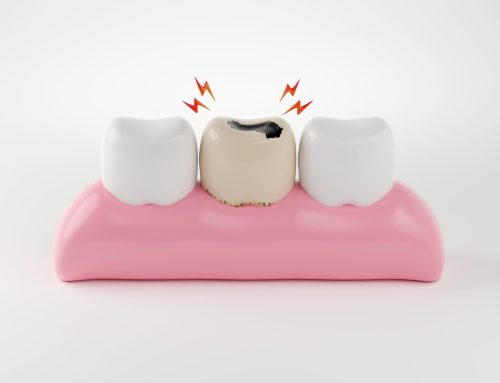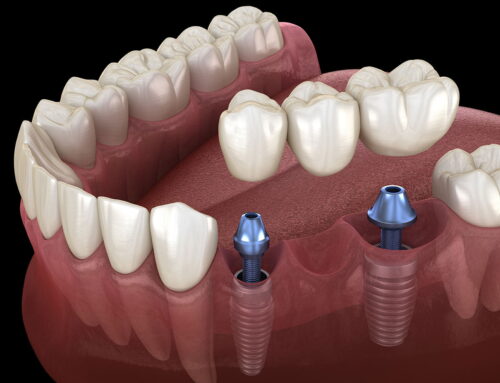The temporomandibular joint, or TMJ, plays a pivotal role in our daily lives, facilitating the intricate movements required for chewing, speaking, and expressing emotions through facial expressions. However, when this joint becomes a source of pain and discomfort, it can significantly impact our quality of life. This comprehensive guide delves into the intricacies of TMJ jaw pain, unravelling its causes, symptoms, and diagnostic journey. Join us as we navigate the world of TMJ disorders, offering insights and solutions for those seeking relief from this often perplexing ailment.
The TMJ Blueprint: Understanding the Basics
Before we embark on the exploration of TMJ-related pain, it’s essential to understand the basic architecture of the temporomandibular joint. Situated on either side of the head, these joints connect the jawbone to the skull, facilitating the movements essential for daily activities like talking and eating. A complex network of muscles, ligaments, and the jawbone works harmoniously to ensure smooth and coordinated jaw movements. Now, let’s delve into the intricacies of what makes the TMJ a marvel of biomechanical engineering.
Unraveling the Triggers: What Causes TMJ Jaw Pain?
TMJ jaw pain can manifest due to a variety of factors, often stemming from a combination of physiological, psychological, and lifestyle elements. Identifying these triggers is crucial for formulating an effective treatment plan. Let’s unravel the diverse causes of TMJ jaw pain, ranging from anatomical issues to stress-induced clenching and grinding, shedding light on the multifaceted nature of this condition.
Anatomical Factors
Anatomical factors, such as jaw misalignment or irregularities in the joint structure, can contribute to TMJ jaw pain. Conditions like arthritis and jaw injuries may alter the normal functioning of the joint, leading to discomfort and dysfunction. Understanding the anatomical aspects of TMJ disorders provides valuable insights into the root causes of pain and guides the development of targeted interventions.
Bruxism: The Unconscious Culprit
Bruxism, or teeth grinding, is a common contributor to TMJ jaw pain. The unconscious habit of clenching the jaw and grinding teeth, often exacerbated by stress, can exert excessive pressure on the TMJ. This persistent strain can lead to inflammation and muscle tension and, over time, contribute to the development of TMJ disorders. Understanding the connection between bruxism and TMJ pain opens avenues for preventive strategies and targeted interventions.
Mind-Body Harmony: Psychological Factors in TMJ Pain
Our mental and emotional well-being can significantly influence physical health, including susceptibility to TMJ disorders. Stress, anxiety, and tension manifest in the jaw muscles, contributing to clenching and grinding behaviours that strain the TMJ. Exploring the intricate relationship between psychological factors and TMJ pain sheds light on the holistic nature of addressing these disorders.
Signals of Distress: Recognizing Symptoms of TMJ Disorders
Recognizing the symptoms of TMJ jaw pain is crucial for early intervention and effective management. From localized pain and discomfort to audible clicking or popping sounds during jaw movements, these distress signals provide valuable insights into the presence of TMJ disorders. Let’s explore the diverse symptoms that individuals may experience, creating awareness and fostering a proactive approach to seeking professional guidance.
Jaw Pain and Tenderness
Pain and tenderness in the jaw area are hallmark symptoms of TMJ disorders. Individuals may experience discomfort while chewing, speaking, or even at rest. Understanding the nuances of jaw pain and tenderness allows individuals to connect their experiences with potential TMJ issues, prompting timely consultation with dental professionals.
Clicking or Popping Sounds
Clicking or popping sounds during jaw movements can be disconcerting and may indicate underlying issues with the TMJ. These audible clues often accompany jaw pain and may result from joint dysfunction, disc displacement, or muscle imbalances. Exploring the significance of these sounds provides valuable insights into the dynamics of the TMJ and aids in the diagnostic process.
Limited Jaw Movement
Individuals with TMJ disorders may experience limitations in jaw movement, hindering the normal range of motion. This restriction can manifest as difficulty opening the mouth fully or deviations in jaw alignment. Understanding the impact of limited jaw movement on daily activities underscores the importance of seeking professional evaluation and tailored interventions.
Diagnosing TMJ Jaw Pain
Accurate diagnosis forms the foundation for effective management of TMJ jaw pain. The diagnostic journey involves a comprehensive assessment that considers the individual’s medical history, symptoms, and, in some cases, imaging studies. Understanding the steps involved in diagnosing TMJ disorders empowers individuals to collaborate with dental professionals in devising personalized treatment plans. Let’s navigate the diagnostic landscape and unravel the key aspects of determining the cause of TMJ jaw pain.
Clinical Evaluation
A detailed clinical evaluation is the first step in diagnosing TMJ jaw pain. Dental professionals gather information about the patient’s medical history, symptoms, and any contributing factors. This patient-centered approach allows for a comprehensive understanding of the individual’s unique circumstances and sets the stage for further diagnostic measures.
Imaging Studies
In some cases, imaging studies may be recommended to obtain a detailed view of the TMJ’s internal structures. X-rays, CT scans, or MRI scans can reveal anatomical abnormalities, joint positioning, and the condition of surrounding tissues. Incorporating imaging studies into the diagnostic process enhances the precision of identifying underlying issues contributing to TMJ jaw pain.
Treatment Options for TMJ Jaw Pain
Effective management of TMJ jaw pain involves a tailored approach that addresses each individual’s specific causes and symptoms. From conservative measures to more advanced interventions, various treatment options exist to alleviate discomfort and restore optimal jaw function. Let’s explore the diverse strategies dental professionals employ to restore harmony to the TMJ.
Lifestyle Modifications
In many cases, lifestyle modifications are pivotal in managing TMJ jaw pain. Simple adjustments to daily habits, such as practicing relaxation techniques to mitigate stress, adopting proper posture, and avoiding excessive gum chewing, can improve TMJ health. Exploring these lifestyle modifications provides individuals with proactive measures to integrate into their routines for ongoing well-being.
Occlusal Splints and Night Guards
For individuals with bruxism or clenching habits contributing to TMJ jaw pain, occlusal splints or night guards may be recommended. These custom-fitted oral appliances create a protective barrier, preventing excessive pressure on the teeth and TMJ during sleep. Understanding the role of occlusal splints and night guards in guarding against discomfort sheds light on their therapeutic benefits.
Physical Therapy and Jaw Exercises
Physical therapy tailored to address TMJ disorders can be instrumental in restoring optimal jaw function. Therapeutic exercises, stretching, and massage techniques reduce muscle tension, improve joint mobility, and promote overall jaw health. Incorporating physical therapy into the treatment plan empowers individuals to participate in their recovery journey actively.
Medications for Symptom Relief
Medications may sometimes be prescribed to alleviate pain, inflammation, or muscle tension associated with TMJ jaw pain. Understanding the role of medications in symptom relief provides individuals with insights into the supportive measures that may complement other treatment modalities.
Collaborating with Your Calgary Dental Office
Navigating the complexities of TMJ jaw pain requires a collaborative approach between individuals and their dental professionals. Your Calgary dental office serves as a partner in your TMJ wellness journey, offering expertise, guidance, and personalized care. By fostering open communication, seeking timely intervention, and embracing a proactive mindset, individuals can embark on a path toward relief and restoring jaw function. Let the journey to understanding and managing TMJ jaw pain be a collaborative venture, empowering you to prioritize your oral health and overall well-being.
Check-in with your friendly Somerset Dental team if you’ve been experiencing TMJ Jaw Pain and are looking for solutions.
Have you or anyone you know experienced TMJ Jaw Pain? What was the first thing you noticed? Share your experience with our readers in the comments below.





